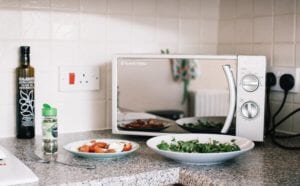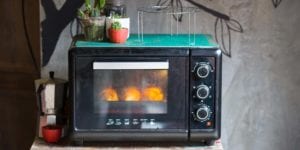Start Buying Whole Bean with These Manual Coffee Grinders
Tired of the same bland coffee from your Keurig or standard coffee maker? While using K-Cups and large tubs of pre-ground coffee can offer convenience, it’s hard to argue against the fresh taste that comes from using whole bean coffee ground immediately before brewing.
Making whole bean coffee might sound like a difficult affair, but odds are you can actually keep using your current coffee maker and invest in a powerful and low-cost manual coffee grinder. This article highlights six of the best manual coffee grinders available so that you can set yourself on the road to a better cup of coffee.
- Adjustable grinder with 18 click settings
- Removable hand crank
- 0.5 cup capacity
- Lifetime warranty from manufacturer defects
- Offers 15 click settings
- Upper hopper holds 5 cups of coffee worth of beans
- Stainless steel body
- 1 year warranty
- Sleek design
- Simple knob adjustment
- 2 cup capacity
- No listed warranty
- Solid wood & stainless steel design
- Stepless adjustable grinding screw
- Durable ceramic burr
- No listed warranty
- Detachable handle with silicone grip
- Measuring base & container
- Ceramic burr
- 30-day money-back guarantee
- Hand crank or hand turn operation
- Travel design includes coffee filter
- Built-in bean counter
- Quality guarantee

The JavaPresse Manual Coffee Grinder is our first pick because it expertly balancing lots of options with a simple and durable design. Using a detachable hand crank and a simple, stainless steel cylindrical design, JavaPresse has managed to make a very durable grinder that can be quickly thrown into a carry on for travel purposes.
The company boasts that the noise created by the grinder is over 90% quieter than automatic options, and with the viewing window you can quickly track just how much you’ve made. While we would have appreciated some measurement markings outside of the grinder, we have little to complain about overall. With 18 steps, the JavaPresse is quick to use, relatively precise, and built to last.
Pros
- Adjustable grind selector
- Great design
- Viewing window
- Great for travel
- Good capacity
Cons
- No measurement markings

For a more stripped down option that is both affordable and easy to use, the PHIVE Manual Coffee Grinder provides high capacity and comfortable operation, among other features.
The PHIVE grinder offers enough space in its upper hopper to hold enough beans for five cups of coffee. Likewise, the container at the bottom has room for 100 grams of beans. With the added benefit of 15 step settings, this makes this grinder perfect for a home where more than one person plans to use the grinder. While some may prefer a more precise coffee grinder, this option is perfect for those who are just getting into making their own coffee grinds or want an affordable solution that gets the job done.
Pros
- Durable design
- High capacity
- Ergonomic hand crank
- Affordable
Cons
- Not very precise
- No measurement markings
For the individual user who wants a straightforward, no-frills coffee grinder, the Hario Mini Mill may be the right pick for you. The Mini Mill is clearly marked for one or two cups of coffee, so all you need to do is grind until you hit your mark. Likewise, this grinder is the first on our list that features a stepless design, which can be preferable to many for its precision. While the upper hopper is a bit small and may need lots of refilling, we appreciate the focus on a small, portable grinder that’s easy to maintain and store.
Pros
- Measurement markings
- Stepless design
- Very portable
- Easy to clean
Cons
- Small upper hopper
Providing a stark contrast to the previous three grinders and featuring a unique wood design, this grinder from UnderReef looks to bring an antiquated style back to life. This rustic and red-tinted wood grinder uses a stepless design and a stainless steel upper hopper. Once you’ve finished your grind, you’ll simply lift the hopper from the container and take the grinds from there.
This pick is perfect for those who need a stylish and functional coffee grinder to match their kitchen, but no markings and a closed design means you may be guessing a bit at how much you’ve made. Likewise, the upper hopper is quite small and needs lots of refilling. Regardless, this unique option is worth considering if you want an easily cleaned stepless grinder with a good design and high-quality construction.
Pros
- Great construction
- Unique design
- Stepless design
- Durable
Cons
- Small capacity
- Small upper hopper
- Closed design
The Shanik SYNCHKG130284, much like the JavaPresse, focuses on portability and simple, cylindrical design. This grinder offers quick, stepless operation in a package that’s made to be moved. The included carrying bag makes it easy to keep track of any removed pieces and keep the grinder clean and separate from the rest of your packed things.
The adjustable knob is also much easier to use than some of our other stepless picks, which makes adjustment a breeze. This grinder also comes with measurement markings in tablespoons to help you get the right amount for your next cup of joe. Cleaning this product, though, is going to be a bit more difficult than some of the others, since the assembly knob and burr need to be fully removed and take a bit of work to access. Otherwise, for those who like the JavaPresse but would prefer a stepless variant, this is a perfectly good alternative.
Pros
- Stepless design
- Highly durable
- Portable
- Measurement markings
Cons
- Difficult cleaning process
Our final coffee grinder pick offers two different means of operation and is designed to help you go from whole beans to a finished cup of joe. The SUNPIN Manual Coffee Grinder comes with a grinder, coffee filter, flask, and storage bin, which means you can make a cup of coffee just about anywhere. The grinder works either with the included hand crank or by twisting the top of the unit itself.
The SUNPIN grinder is also stepless, and while adjusting can be a bit difficult, it is also very precise. The price may be higher for this grinder than some of our others, but SUNPIN certainly added a few features to justify it. Perfect for travel and brewing alike, we recommend the SUNPIN grinder if you want to make your coffee no matter where you are.
Pros
- Very precise
- Stepless design
- Included filter and flask
- Multiple operating methods
Cons
- Expensive
- Can be difficult to adjust
Comparison Chart
| FEATURE | JavaPresse Manual Coffee Grinder | PHIVE Manual Coffee Grinder | Hario Mini Mill |
| Grinder Type | Step | Step | Stepless |
| # of Steps | 18 | 15 | – |
| Burr Type | Ceramic | Ceramic | Ceramic |
| Weight | 9.4 oz | 24.32 oz | 11.2 oz |
| Dimensions | 1.8 X 7.5 X 1.8 | 8.5 X 4.5 X 4.4 | 7.3 X 4.5 X 3.2 |
| FEATURE | UnderReef UR17CG07 | Shanik SYNCHKG130284 | SUNPIN Manual Coffee Grinder |
| Grinder Type | Stepless | Stepless | Stepless |
| # of Steps | – | – | – |
| Burr Type | Ceramic | Ceramic | Ceramic |
| Weight | 16.2 oz | 11.2 oz | 24 oz |
| Dimensions | 7.8 X 3.7 X 3.7 | 5.9 X 5.9 X 5.9 | 7.1 X 3.1 X 3.1 |
Buyer’s Guide:
Manual Coffee Grinders
Not sure which manual coffee grinder is right for you or why you shouldn’t just pick up an automatic or electric option? Here’s what you need to know about coffee grinder, blades, burrs, steps, and everything in between.
Final Thoughts
Many of these coffee grinders appeal to different types of coffee drinkers, so depending on your needs and desires you may prefer one of these grinders over another.
For the best overall manual coffee grinder, we have to recommend the JavaPresse grinder. Although some coffee enthusiasts may scoff at a step coffee maker making the top of our list, the wide range of grinding options, durability, capacity, and quality makes this a good pick no matter how into coffee you are.
If you like the JavaPresse but need a stepless option for that perfect blend, the Shanik grinder offers most of the same features and design choices but without the steps. For the more economical drinkers, the PHIVE manual coffee maker is straightforward in design and low in price. You should be able to get a great cup of coffee out of this grinder with little time spent tinkering with settings or dials.
No matter which manual coffee grinder is right for you, we hope you start buying whole bean today and see just why so many people prefer fresh, ground coffee to the alternative. But be warned: once you go down this rabbit hole, you may never look at pre-ground coffee the same way again.










